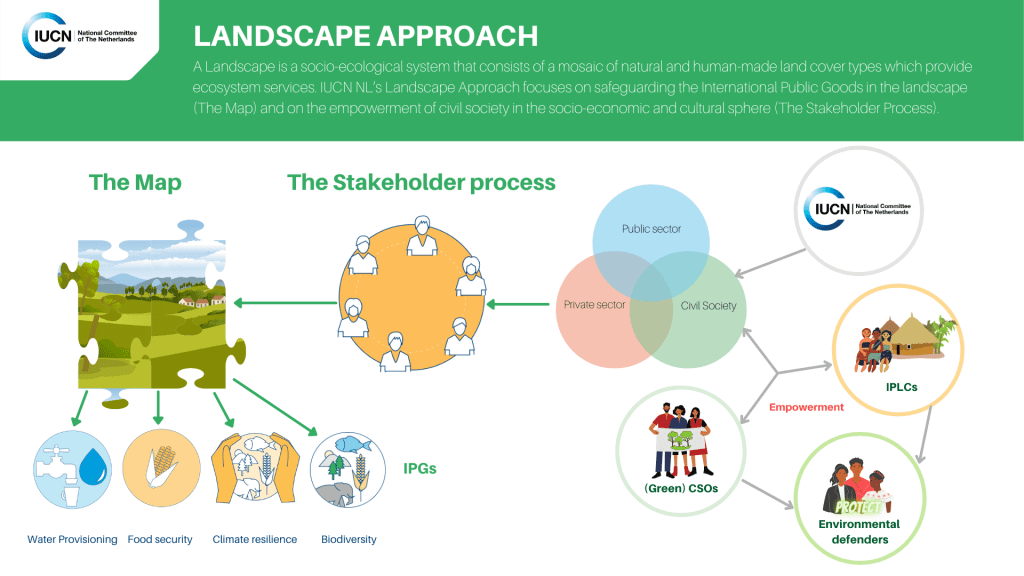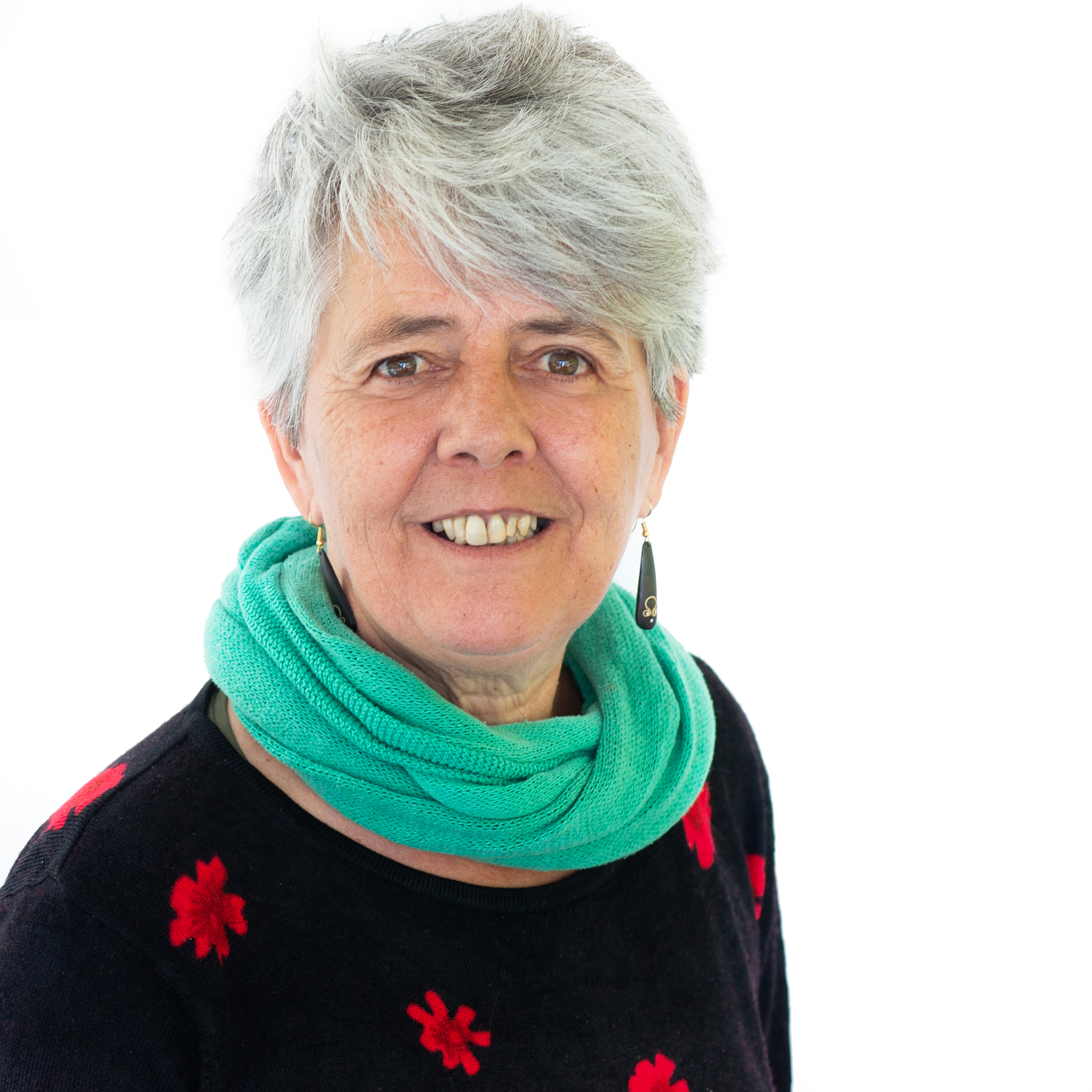IUCN NL welcomes new member organisations Future For…
28 April, 2025
Friday 21 may 2021
Header photo by: Julianna Corbett on Unsplash
IUCN NL’s Landscape Approach focuses on the empowerment of civil society and on safeguarding the International Public Goods (IPGs). The International Public Goods (IPGs) are water provisioning, food security, climate resilience and biodiversity. These IPGs are important for the livelihoods of indigenous peoples and local communities (IPLCs).
The essence of the landscape approach is managing interactions across the landscape, between types of land use, and between stakeholders. For our SRJS programme, we developed the following definition: ‘A Landscape is a socio-ecological system that consists of a mosaic of natural and human-made land cover types which provide ecosystem services and development opportunities for a diversity of stakeholders.’
Healthy ecosystems provide many services: forests help stabilize slopes, mangrove forests help protect coastlines, wetlands help to buffer excess rainwater, insects pollinate agricultural crops, the wild flora contains herbal medicines, etc.
Landscape boundaries may be concrete, fuzzy, or nested, and may correspond to watershed boundaries, distinct land features, and/or jurisdictional and administrative boundaries. Thus, a landscape may encompass areas ranging from hundreds to tens of thousands of square kilometres.
The landscape approach is like a basket that you can fill with priorities, objectives and targets. Generalising, the landscape approach consists of two components, the physical features (the map) and the stakeholder process.
The stakeholders in a landscape can be classified into three groups: the public sector, the private sector and civil society. In general, government and private companies are much better organised than civil society and are at ease with the decorum that formal meetings demand; communities are often not accustomed to representing the needs and aspirations of their constituencies in these formal settings.
To guarantee inclusive stakeholder processes, IUCN NL focuses on facilitating capacity strengthening of civil society and within this category on empowerment of (green) civil society organisations (CSOs) and indigenous people and local communities (IPLCs). Special attention is given to the brave women and men from the CSOs and the IPLCs who consistently defend the rights of the people and their territories. Often, these Environmental Defenders are subject to intimidation, framing and physical violence.

IPLCs should be capacitated to participate in the multi-stakeholder processes and articulate the importance of the IPGs. But just participation is not enough. Following the concept of Environmental Justice, IUCN NL also strives for recognition of the history of IPLCs in a landscape and their traditional wisdom. They have a lot of knowledge that can help in conserving ecosystems and ecosystem services that are important to all stakeholders in a landscape.
It is obvious that interests of different stakeholders may differ, but another challenge is the different world views and the different vocabularies. To bridge these different understandings, IUCN NL is promoting tools and concepts that are widely recognized and can be understood by all stakeholders, like Environmental Services, Free Prior and Informed Consent (FPIC), Strategic Environmental Assessments (SEA), Indigenous and Community Conserved Areas (ICCA) and Other Effective Conservation Measures (OECMs). Finally, IUCN NL strives for fair distribution of opportunities and incomes (PES, compensation, profit sharing, jobs, etc.).
